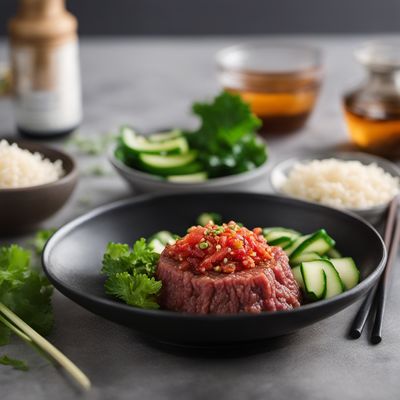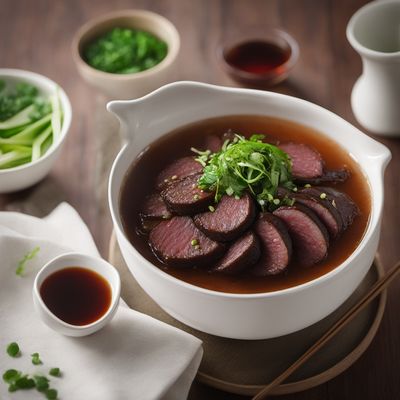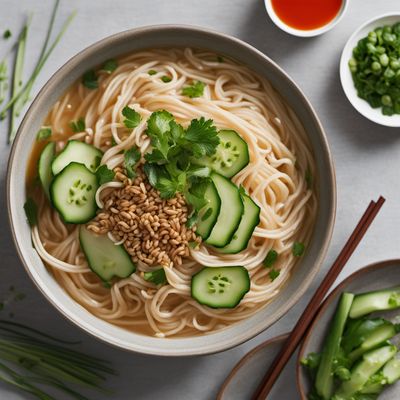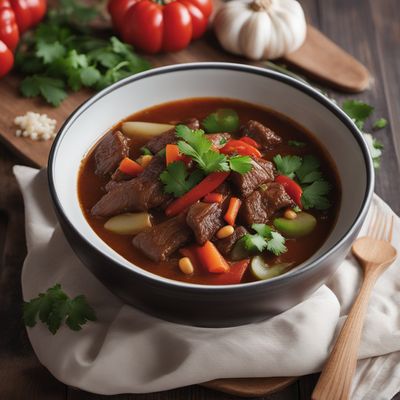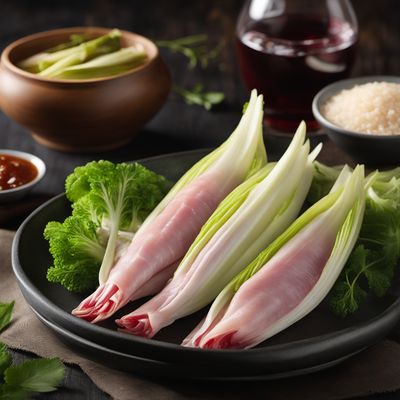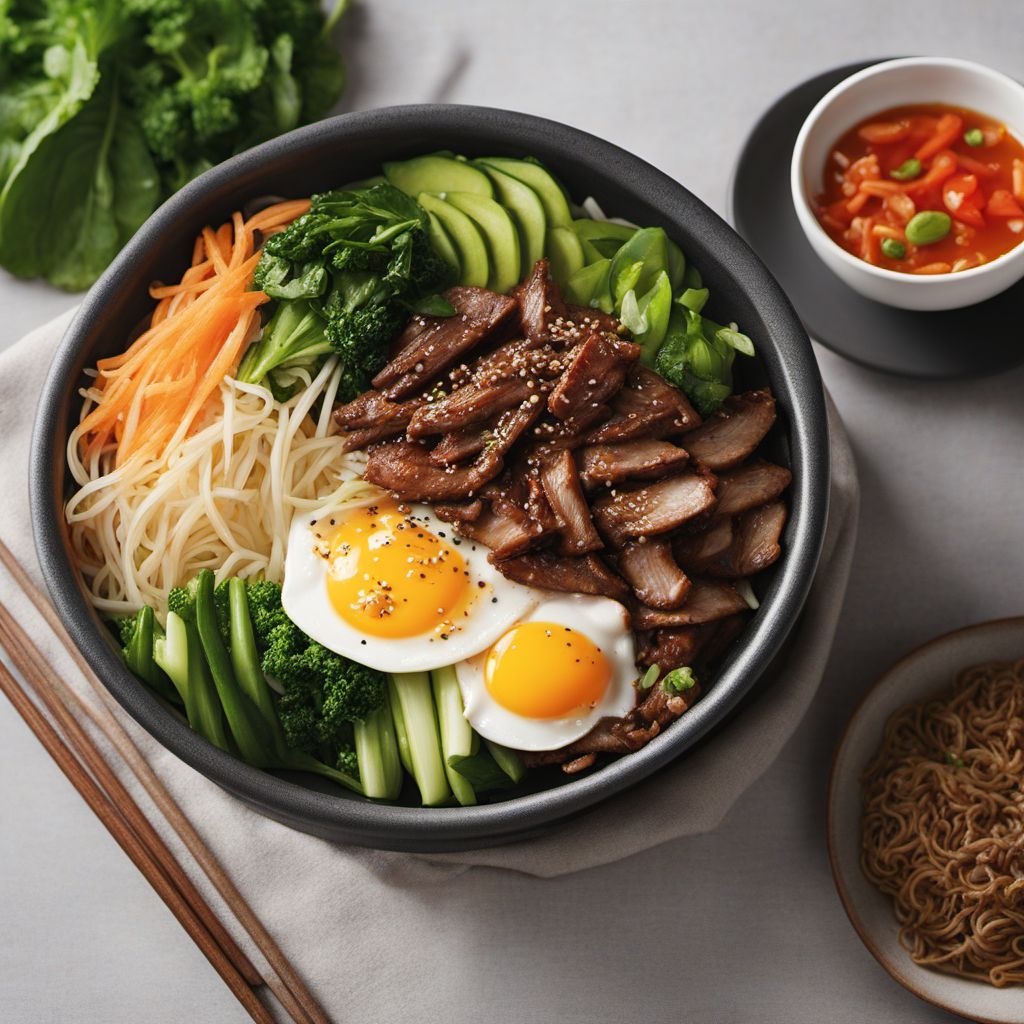
Recipe
Haipai-style Bibimbap
Haipai Harmony Bowl: A Fusion of Flavors in Haipai-style Bibimbap
4.9 out of 5
Haipai-style Bibimbap is a delightful fusion dish that combines the vibrant flavors of Korean Bibimbap with the unique culinary traditions of Haipai cuisine. This dish showcases a harmonious blend of fresh ingredients, bold spices, and a variety of textures, resulting in a truly satisfying and flavorful meal.
Metadata
Preparation time
30 minutes
Cooking time
20 minutes
Total time
50 minutes
Yields
4 servings
Preparation difficulty
Medium
Suitable for
Gluten-free, Dairy-free, Nut-free, Low-carb, High-protein
Allergens
Soy, Sesame
Not suitable for
Vegan, Vegetarian, Paleo, Keto, Halal
Ingredients
In Haipai-style Bibimbap, we incorporate the unique flavors and ingredients of Haipai cuisine while still maintaining the essence of the original Korean Bibimbap. The Haipai-style sauce adds a distinct tanginess and sweetness to the dish, which is not typically found in traditional Bibimbap. Additionally, the choice of vegetables and meat may vary slightly, reflecting the availability of ingredients in Haipai cuisine. We alse have the original recipe for Bibimbap, so you can check it out.
-
2 cups (470ml) cooked rice 2 cups (470ml) cooked rice
-
200g carrots, julienned 200g carrots, julienned
-
200g spinach 200g spinach
-
200g mushrooms, sliced 200g mushrooms, sliced
-
200g bean sprouts 200g bean sprouts
-
300g thinly sliced beef or pork 300g thinly sliced beef or pork
-
4 eggs 4 eggs
-
4 tablespoons soy sauce 4 tablespoons soy sauce
-
2 tablespoons sesame oil 2 tablespoons sesame oil
-
2 tablespoons vinegar 2 tablespoons vinegar
-
2 tablespoons sugar 2 tablespoons sugar
-
Salt, to taste Salt, to taste
-
Vegetable oil, for cooking Vegetable oil, for cooking
Nutrition
- Calories (kcal / KJ): 450 kcal / 1884 KJ
- Fat (total, saturated): 12g, 3g
- Carbohydrates (total, sugars): 60g, 6g
- Protein: 25g
- Fiber: 6g
- Salt: 2g
Preparation
-
1.Cook the rice according to package instructions and set aside.
-
2.In a large pan, heat some vegetable oil over medium heat. Add the julienned carrots and sauté until slightly softened. Remove from the pan and set aside.
-
3.In the same pan, blanch the spinach in boiling water for 1-2 minutes. Drain and rinse with cold water. Squeeze out any excess water and season with a pinch of salt. Set aside.
-
4.In a separate pan, sauté the mushrooms until they release their moisture and become tender. Remove from the pan and set aside.
-
5.In the same pan, blanch the bean sprouts in boiling water for 1-2 minutes. Drain and rinse with cold water. Season with a pinch of salt and set aside.
-
6.In a bowl, combine the soy sauce, sesame oil, vinegar, and sugar to make the Haipai-style sauce. Stir until the sugar is dissolved.
-
7.In the same pan, cook the thinly sliced beef or pork until browned and cooked through. Pour half of the Haipai-style sauce over the meat and stir to coat. Remove from heat and set aside.
-
8.In a separate pan, fry the eggs sunny-side up or according to your preference.
-
9.To assemble the Haipai-style Bibimbap, divide the cooked rice among four bowls. Arrange the sautéed vegetables and marinated meat on top of the rice. Place a fried egg on each bowl. Drizzle the remaining Haipai-style sauce over the ingredients.
-
10.Serve the Haipai-style Bibimbap immediately, allowing each person to mix the ingredients together before enjoying.
Treat your ingredients with care...
- Carrots — Make sure to julienne the carrots thinly and evenly for a consistent texture in the dish.
- Spinach — Squeeze out excess water from the blanched spinach to prevent the dish from becoming watery.
- Mushrooms — Use a variety of mushrooms such as shiitake, oyster, or button mushrooms for added flavor and texture.
- Bean sprouts — Trim the ends of the bean sprouts before blanching to remove any tough parts.
- Beef or pork — For best results, thinly slice the meat against the grain to ensure tenderness.
Tips & Tricks
- Feel free to customize the vegetables used in the dish based on your preference and seasonal availability.
- Add a sprinkle of toasted sesame seeds or chopped green onions as a garnish for extra flavor and visual appeal.
- If you prefer a spicier version, serve the Haipai-style Bibimbap with a side of chili sauce or kimchi.
- Experiment with different proteins such as chicken, shrimp, or tofu to suit your dietary preferences.
- To save time, you can prepare the vegetables and marinate the meat in advance, making the final assembly quicker.
Serving advice
Serve the Haipai-style Bibimbap in individual bowls, allowing each person to mix the ingredients together before eating. This dish is best enjoyed immediately while the ingredients are still warm and the flavors are at their peak.
Presentation advice
To enhance the presentation of the Haipai-style Bibimbap, arrange the sautéed vegetables and marinated meat in separate sections on top of the rice. Place the fried egg in the center and drizzle the Haipai-style sauce over the ingredients. The vibrant colors and distinct layers will make the dish visually appealing.
More recipes...
More Korean cuisine dishes » Browse all
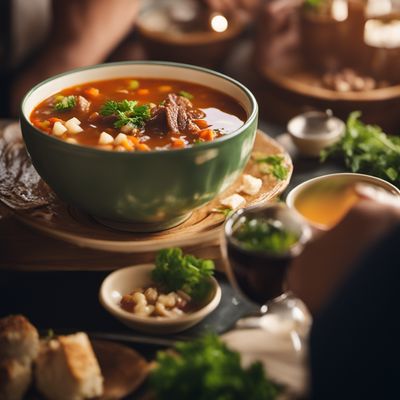
Soyo
Beef and vegetable soup
Soyo is a Korean soup made with soybean paste and vegetables.
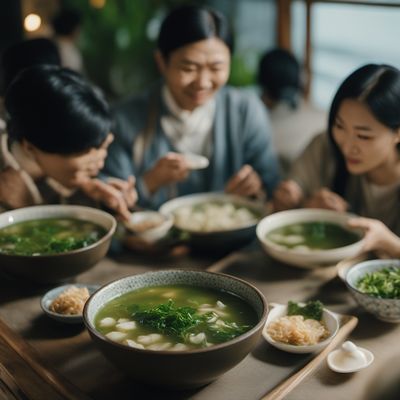
Miyeok-oi-naengguk
Seaweed soup
Miyeok-oi-naengguk is a traditional Korean cold soup made with seaweed and cucumber. It is a refreshing and healthy dish that is perfect for hot...

Bossam
Boiled Pork Wraps
Bossam is a traditional Korean dish that consists of boiled pork belly slices wrapped in lettuce leaves and served with various condiments.




